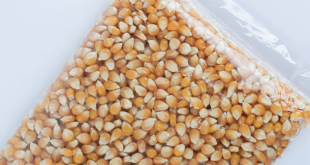Introduction
If you sell sea moss, you’re selling perishable value: texture, flavor, and nutrients. High barrier packaging is the difference between a product that arrives fresh and one that disappoints. Smart brands invest in high barrier custom sea moss packaging because it protects quality, extends shelf life, and reduces waste. This article explains what barrier means, why it matters for sea moss, and how to evaluate options so your product reaches customers the way you intended.
What “high barrier” really means
Barrier refers to a material’s resistance to oxygen, moisture, and light. High barrier films use multi-layer structures, sometimes including foil, to block elements that degrade food. For sea moss, these elements accelerate spoilage, alter texture, and break down nutrients. A high barrier pouch or laminate keeps those forces out and preserves the product inside.
Custom sea moss packaging specified for high barrier performance does not guess at protection. It uses materials suited to the product’s chemistry and the realities of your supply chain.
Why sea moss needs strong barriers
Sea moss gel is water-rich and vulnerable to microbial growth if exposed to air or temperature abuse. Dried sea moss needs moisture protection or it will clump and lose its desirable texture. Light can degrade certain compounds and dull color. High barrier packaging mitigates these risks, keeping oxygen and humidity out and light to a minimum.
When you protect the product, you protect customer experience and reduce the likelihood of complaints or returns. That has a direct business impact.
Material choices and practical tradeoffs
High barrier options include aluminum foil laminates, metallized films, and multi-layer PET laminates. Each has tradeoffs. Foil laminates provide excellent oxygen and light blocking but can limit recyclability unless separated. Metallized films offer a middle ground between performance and visual appeal. Multi-layer laminates can provide tailored properties for puncture resistance and seal strength.
Custom sea moss packaging should be chosen based on expected shelf life, storage conditions, and disposal goals. Ask suppliers for barrier performance metrics like oxygen transmission rate and water vapor transmission rate to compare real performance instead of marketing claims.
Seals, closures, and package integrity
Barrier performance is only as good as the seal. A high barrier film with a poor heat seal or a zipper that leaks defeats the purpose. Invest in reliable sealing methods and test them under stress: temperature swings, compression, and repeated openings.
Tamper-evident seals add trust and verify the package remained closed until the customer opens it. For gel formats, consider inner liners or double seals to prevent leaks without compromising barrier performance.
Testing for real-world conditions
Lab specs only tell part of the story. Run shipping simulations that include vibration, drops, and temperature cycles. Test how long the product keeps in those conditions. Also test the product after opening and repeated resealings to ensure consumer behavior won’t damage freshness.
Work with packaging partners who will provide prototypes and support shipping tests. Testing early prevents costly recalls.
Regulatory and food-safety considerations
If you sell in regulated markets, packaging must meet food contact standards. Make sure materials are approved for food use and that your supplier can provide certificates. For products marketed with health claims, traceability is important; include batch codes and clear labeling on the package.
Custom sea moss packaging that aligns with regulatory requirements reduces risk and speeds market access.
Sustainability within high barrier choices
Some high barrier films are recyclable or contain PCR content, but options vary. Recyclable mono-material high barrier films are emerging. If sustainability is a priority, discuss it with suppliers and evaluate lifecycle impacts. In some cases, a hybrid approach works: high barrier inner layers for product protection and recyclable outer cartons for branding.
What this really means is you can aim for both protection and responsibility, but you must verify that sustainability choices don’t compromise barrier needs.
Cost, value, and ROI
High barrier materials cost more per unit, but the business case often justifies the expense. Fewer spoiled shipments, lower return rates, and longer shelf life improve margins. High barrier custom sea moss packaging can also command premium pricing when it preserves a superior product experience.
Calculate cost against returns avoided, customer lifetime value, and brand reputation. In many cases, the right packaging pays for itself.
Implementation and supplier selection
Choose suppliers experienced with food-grade barrier laminates and with a track record of testing. Ask for oxygen and moisture transmission rates, seal strength data, and sample kits for shipment testing. Confirm minimum order quantities and lead times so you can plan production.
Prototype fast, test, iterate, then scale. This approach keeps risk under control while improving product quality.
Conclusion
Barrier performance is not optional for sea moss brands that care about quality. High barrier custom sea moss packaging locks in freshness, protects nutrients, and reduces waste. It requires the right materials, reliable seals, and thorough testing, but the payoff is clear: fewer complaints, longer shelf life, and better customer trust. Smart brands treat packaging as an investment in product integrity. If quality and longevity matter to your customers, make barrier performance a core part of your packaging strategy.
 USAInsiderToday Latest News, Features, and Culture Coverage
USAInsiderToday Latest News, Features, and Culture Coverage

